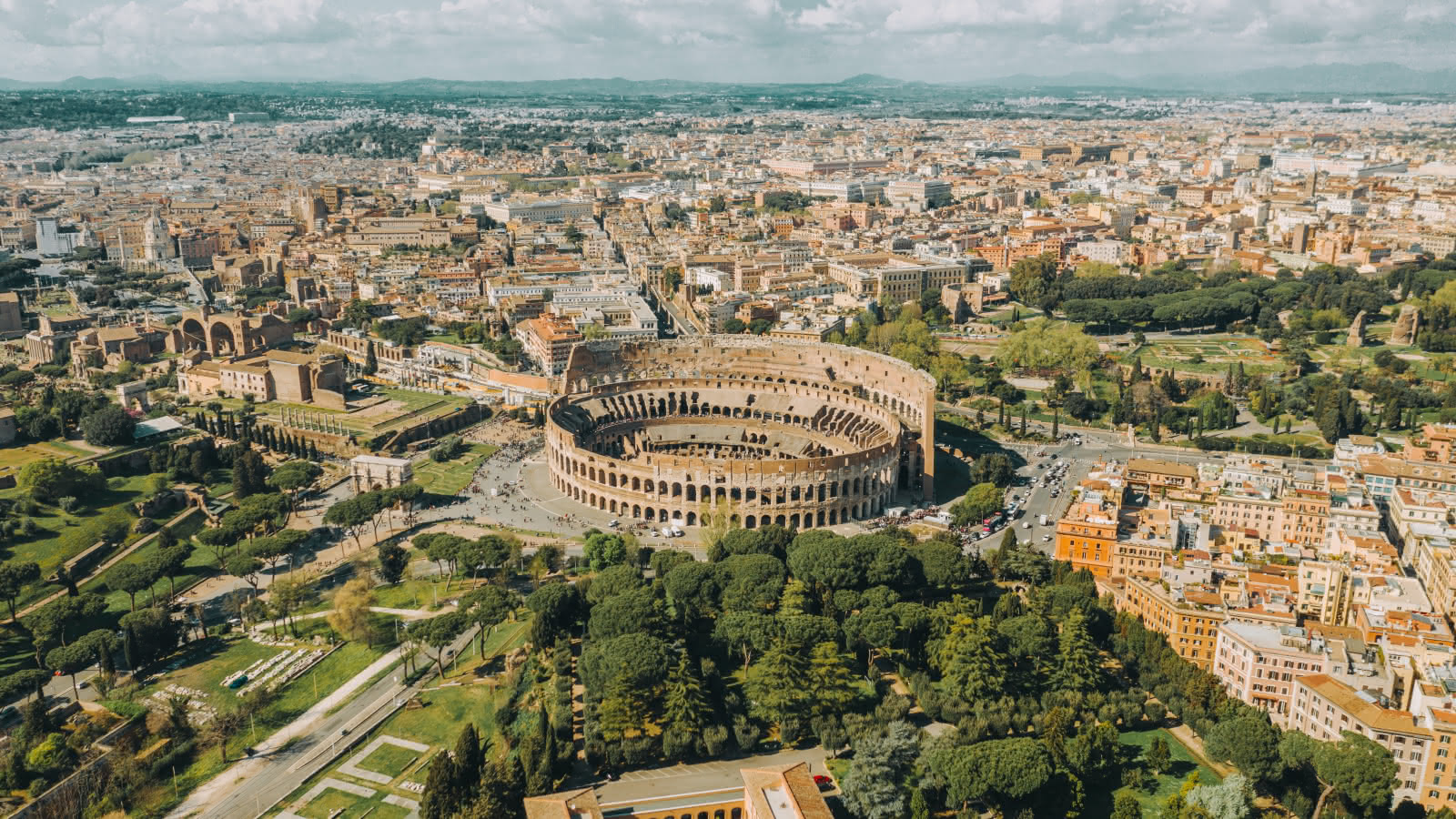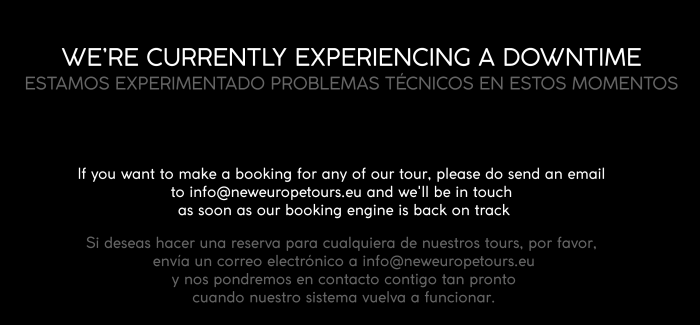
Welcome to the Eternal City, where history, art, and culture converge in a breathtaking symphony of experiences. Rome, the heart of Italy, is a city like no other, captivating the hearts of travelers from across the globe.
In this comprehensive guide, we invite you to embark on a remarkable exploration of Rome, whether on your own or by joining one of our fantastic free walking tours, your first visit to Rome promises to be an unforgettable journey.
1. The Colosseum: Icon of Ancient Rome
Begin your Roman adventure with a visit to the iconic Colosseum, an awe-inspiring symbol of ancient Rome’s grandeur. This colossal amphitheater, where gladiators once fought for their lives, stands as a testament to the engineering marvels of its time.
As you explore the Colosseum’s massive interior, imagine the roars of the crowd and the epic battles that once took place within its walls. Opt for a guided tour to gain insight into its history and the significance it holds in Roman culture. Don’t forget to capture the perfect snapshot of this magnificent structure from the nearby viewpoints.
And if you are all for learning about its ancient history like we are, our Ancient Rome Free Tour might just be what you are looking for to discover some of the world’s most important Roman remains and monuments dating back millenia in a 2.5-hour tour by the hand of a local guide.

2. Roman Forum and Palatine Hill: A Walk Through History
Adjacent to the Colosseum lies the Roman Forum, the heart of ancient Rome’s political and social life. Stroll through the ruins of temples, basilicas, and government buildings that once buzzed with activity. Highlights include the Temple of Saturn, the Arch of Septimius Severus, and the House of the Vestals.
From the Roman Forum, make your way up Palatine Hill, one of the legendary Seven Hills of Rome. Here, you’ll discover the origins of the city, where ancient emperors resided in opulent palaces. The panoramic views from the hill offer a glimpse into the grandeur of ancient Rome.
3. The Vatican City: Art, Religion, and History
No visit to Rome is complete without a trip to the Vatican City, an independent city-state surrounded by the city of Rome. The Vatican is home to St. Peter’s Basilica, one of the most significant churches in Christianity, and the Vatican Museums, where you’ll find priceless art collections, including Michelangelo’s masterpiece, the Sistine Chapel ceiling.
Explore the magnificent St. Peter’s Square, designed by Gian Lorenzo Bernini, and climb to the top of St. Peter’s Basilica for breathtaking views of the city. Be sure to dress appropriately when visiting religious sites in the Vatican, covering your shoulders and knees.

4. The Pantheon: A Masterpiece of Roman Engineering
Step into the best-preserved ancient Roman building in the world, the Pantheon. This architectural marvel boasts a massive dome with a perfectly round opening at its apex, allowing natural light to flood the interior. Marvel at the oculus, the central opening, and the stunning interior adorned with marble, statues, and a serene atmosphere.
The Pantheon was originally a temple dedicated to all gods, and today it serves as a church. Take a moment to appreciate the sheer genius of Roman engineering and design as you explore this timeless masterpiece.
And if you are on the clock or simply looking for an all-in-one experience in which to really immerse yourself in the magic of Rome´s bustling streets and awe-inspiring architecture, Sandemans offers a 2-hour Free Tour of Rome’s City Center to explore its most beautiful and iconic sites by foot.

5. Trevi Fountain: Make a Wish
Make your way to the famous Trevi Fountain, where you can join the tradition of tossing a coin over your left shoulder into the fountain to ensure a return visit to Rome. This Baroque masterpiece depicts the sea god Neptune surrounded by tritons and seahorses, making it a sight to behold both day and night, when it’s beautifully illuminated.
Be prepared for crowds at the Trevi Fountain, as it’s one of Rome’s most popular attractions. Consider visiting early in the morning or late at night, with our Rome by Night Free Tour, for a quieter experience and the opportunity to see Rome in a different light.
6. Spanish Steps and Piazza di Spagna: A Stylish Stroll
Head to the Spanish Steps, a famous gathering spot for both locals and tourists. Climb the 135 steps that lead to the Trinità dei Monti church, where you’ll be rewarded with panoramic views of the city below.
The nearby Piazza di Spagna is a fashionable area filled with designer boutiques, cafes, and cultural landmarks. It’s an excellent place to take a leisurely walk, do some shopping, or simply soak in the lively atmosphere.
7. Roman Cuisine: A Gastronomic Delight
Rome is a haven for food lovers, and you must savor traditional Roman dishes during your visit. Indulge in classics like pasta carbonara, cacio e pepe, and supplì (deep-fried rice balls). Enjoy an authentic Roman pizza, known for its thin, crispy crust.
Cap off your meals with delectable gelato from one of Rome’s renowned gelaterias. Don’t forget to pair your culinary adventures with a glass of Italian wine or a refreshing Aperol Spritz.

8. Exploring Trastevere: A Bohemian Neighborhood
Take a stroll across the Tiber River to the charming Trastevere neighborhood. This bohemian district is known for its narrow cobblestone streets, colorful facades, and vibrant nightlife. Explore the Basilica of Santa Maria in Trastevere, one of Rome’s oldest churches, and then wander through the neighbourhood’s lively piazzas, such as Piazza di Santa Maria.
In the evening, Trastevere comes alive with bustling trattorias and bars. It’s an excellent place to savour Roman cuisine and experience the city’s authentic nightlife.
Bonus Tip: Free Walking Tours
If you’re looking to immerse yourself in the city’s history and culture while keeping your travel expenses in check, consider joining one of our fantastic Rome free walking tours. These tours are led by knowledgeable guides who are passionate about sharing the stories and secrets of the city. You’ll have the opportunity to visit some of Rome’s most famous landmarks and hidden gems while learning about their historical significance.
From the Spanish Steps to the Trevi Fountain, and from the Pantheon to the charming streets of Trastevere, these tours cover a wide range of attractions. While the tours are technically free, it’s customary to tip your guide at the end to show your appreciation for their expertise and enthusiasm. Not only are these tours budget-friendly, but they also provide a more intimate and local perspective of Rome, making your visit even more enriching.
So, lace up your comfortable walking shoes, grab a map, and get ready to explore the city on foot with fellow travelers from around the world.
*Please note that tours in Rome are offered by our partners, New Rome Free Tour.
Our Practical Tips for Visiting Rome for the first time
Before embarking on your Rome trip, here are some practical tips to help you make the most of your trip:
- Language: While Italian is the official language in Rome, many locals working in the tourism industry speak English. However, it’s always appreciated when visitors make an effort to speak some basic Italian phrases. Learning common greetings and polite expressions can go a long way in enhancing your experience and building rapport with locals.
- Currency: Italy uses the Euro (€) as its currency. It’s advisable to carry some cash for small purchases and to use credit or debit cards for larger expenses. ATMs are widely available throughout the city, so you can withdraw Euros as needed.
- Climate: Rome has a Mediterranean climate, characterized by hot, dry summers and mild, wet winters. The best time to visit is during the spring (April to June) or fall (September to November) when the weather is pleasant, and tourist crowds are more manageable. Summers can be scorching, with temperatures often exceeding 30°C (86°F), so be prepared for the heat and stay hydrated.
- Transportation: Rome has an extensive public transportation system that includes buses, trams, and a subway (Metro). Consider purchasing a Roma Pass or a Rome Card for unlimited travel on public transport and free or reduced-price admission to some attractions. Taxis are readily available, but they can be expensive, so use them sparingly. Walking is a fantastic way to explore the city, as many attractions are within walking distance of each other. However, be cautious when crossing the busy streets, as traffic in Rome can be chaotic.
- Tipping: In Italy, tipping is appreciated but not obligatory. In restaurants, it’s customary to leave a small tip, typically rounding up the bill or leaving 10% of the total. In cafes and bars, you can leave some change. Tipping tour guides and drivers is also appreciated for exceptional service.
- Safety: Rome is generally a safe city for tourists, but like any major city, it’s important to be mindful of your surroundings. Pickpocketing can be a concern in crowded areas, so keep your belongings secure and be cautious in tourist hotspots. It’s also a good idea to have a copy of your passport and important documents in case of loss or theft.
- Dress Code: When visiting religious sites like St. Peter’s Basilica or the Vatican Museums, dress modestly by covering your shoulders and knees. This means no tank tops or short skirts. Casual, comfortable clothing and walking shoes are ideal for exploring the city during the day, while slightly more formal attire may be appropriate for dining at upscale restaurants in the evening.
- Time Zone: Rome operates on Central European Time (CET), which is UTC+1 during standard time and UTC+2 during daylight saving time.
- Electrical Outlets: Italy uses Type C and Type F electrical outlets, with a standard voltage of 230V and a frequency of 50Hz. If your devices use a different plug type or voltage, you may need a plug adapter and/or voltage converter.
Conclusion
Rome, with its timeless beauty and rich history, has a way of capturing the hearts of all who visit. This guide has provided you with a glimpse of the essential experiences for first-time travelers to Rome, but there is much more to explore and discover in this enchanting city. As you explore the cobblestone streets and encounter ancient ruins around every corner, you’ll undoubtedly develop your own love affair with the Eternal City, making memories that will last a lifetime.
If you enjoyed this article, keep an eye on our blog for more content on Rome and how to make your best of your trip. Feel free to shoot any questions and ideas that we can help solve in our next post.
Enjoy your Roman adventure!
Sources:
Rome Unveiled: A Self-Guided Tour of the Eternal City | VoxCity
2 Days in Rome: The Perfect Rome Itinerary for Your First Visit | Earth Trekkers
21 of the best things to do in Rome | Times Travel




Comments